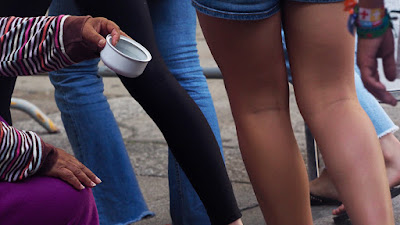La Naturaleza, en su génesis, es pura matemática, y en sus formas una geometría divina. Esas formas se repiten hasta el infinito. Son copias exactas de una figura primigenia a partir de unas partículas elementales creadas por el aliento de la Vida. Son propuestas simétricas y continuas.
Como decía Ramanujan, el famoso matemático indio “una ecuación para mí no tiene sentido, a menos que represente un pensamiento de Dios”.
¿Qué es, si no, la relación de la Naturaleza con el hombre, y del hombre con la Naturaleza? Su fruto es una ecuación perfecta, bella y espontánea.
- La Naturaleza nos dona sus frutos de forma espontánea. Solo nos pide una relación de respeto y honestidad en nuestro trabajo con ella.
Cada grano de uva es único en todas sus estructuras, diferente a otros granos a pesar de ser concebidos en una misma cepa. ¿Acaso podemos pensar que esa singularidad es únicamente fruto de nuestro trabajo? Ignorantes seriamos si pensáramos así.
El trabajo que aquí comparto con todos vosotros lo creé en la Heredad de Viña Tondonia, en Haro, el dieciséis de noviembre, viernes. Una mañana de muchas nubes con vientos del sur sureste. Las nubes fueron perfectas, como filtros alquímicos.
Su resultado: color, color y color. Colores fractales.
- Gracias María por permitirme compartir una pasión. Pasión por la vida.
Nature, in its genesis, is pure mathematics, and in its forms a divine geometry. These forms are repeated to infinity. They are exact copies of a primeval figure from elementary particles created by the breath of Life. They are symmetrical and continuous proposals.
As Ramanujan said, the famous Indian mathematician "an equation does not make sense to me, unless it represents a thought of God".
What else is Nature's relationship to man, and man's relationship to Nature? Its fruit is a perfect, beautiful and spontaneous equation.
- Nature gives us its fruits spontaneously. It only asks of us a relationship of respect and honesty in our work with it.
Each grain of grape is unique in all its structures, different from other grains in spite of being conceived from the same vine. Can we think that this singularity is only the fruit of our work? Ignorant we would be if we thought so.
The work that I share here with all of you believes in the Heredad de Viña Tondonia, in Haro, on the sixteenth of November, Friday. A morning of many clouds with south-east winds. The clouds were perfect, like alchemical filters.
Their result: color, color and color. Fractal colors.
- Thank you Mary for allowing me to share a passion. Passion for life.
La Chacona es una composición musical del siglo XVII. En su origen es una forma de danza festiva, muy vivaz, y de gran contenido erótico. Como los buenos vinos…
La Chacona is a 17th century musical composition. In its origin it is a festive dance form, very lively, and of great erotic content. Like good wines...























































